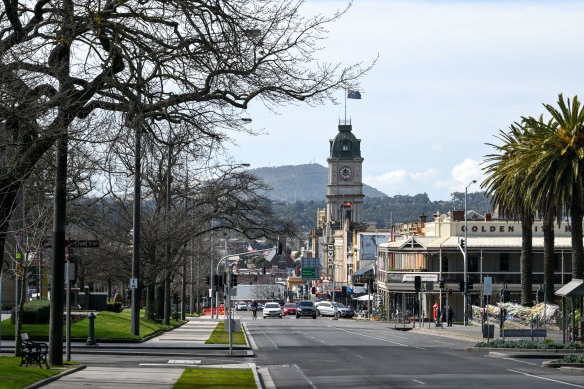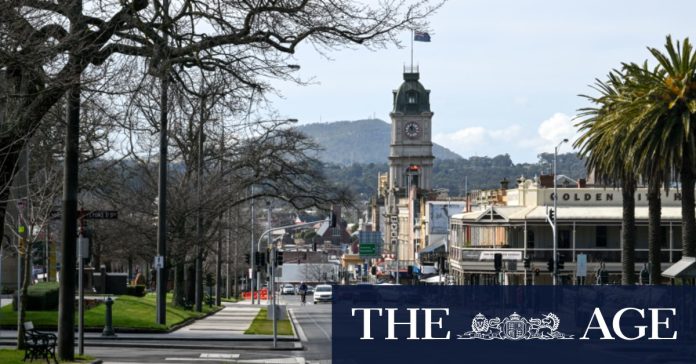[ad_1]
An average Melbourne household who tree-changed to regional Victoria but kept their city employment would be within $10,000 a year in income from affording to buy the typical regional house – not quite meeting the threshold but much closer than if they lived in the capital or if they took a local job in the country.

Regional centres such as Ballarat offer cheaper house prices. Credit: Eddie Jim
A household that left Sydney but kept their city jobs would be about $30,000 a year short of affording the typical regional NSW house, narrowing the gap compared with staying in Sydney or seeking local employment.
The figures come in the wake of the exodus, particularly from Melbourne and also Sydney, during the 2020-’21 pandemic which pushed up prices and rents in the regions, but is now starting to slow.
Kuestenmacher said businesses are increasingly asking people to work in the office at least a few days a week, meaning the tree-change boom during the remote-work era of the lockdown years is over.
Loading
Instead, he said, people who still wanted to live in regional areas were looking in towns that were within a two-hour commute to the CBD of a capital city.
“That then limits the number of regional markets that we might consider,” he said.
“Areas outside those two hours might be attractive destinations, but they’re not for people with a city income who want to hack geography and take the income from the inner city, but take the house from a smaller, cheaper community.”
ANZ senior economist Blair Chapman said although bringing people back to offices contributed to higher prices in the capital cities, many people chose to live in cities anyway for lifestyle and career reasons.
“There are a lot of benefits to living in a city – work opportunities are one. It’s why as a society we built cities,” Chapman said.
Despite this, he said we needed our capitals to provide more housing in their highly prized – and priced – areas while encouraging smaller cities in the regions to grow.
“There’s definitely an argument for larger regional centres. A problem we have in Australia is that our cities are so spread out,” he said. “If we could increase density in most of our cities and increase the population in regional areas, that would help housing affordability.”
Kuestenmacher said Australia needed to continue increasing the population, and the only way to successfully do that was to decentralise it.
Loading
“There is no country in the world where such a high share of the population lives in just the five largest cities,” he said. “There is no way that Australia can operate on a low migration, low population-growth scenario.”
The population was likely to double in roughly the next 75 years, he said, and for those people to thrive, there needed to be better incentives and opportunities for them in secondary cities such as Ballarat and Newcastle – along with building new cities and high-speed rail to connect them.
“The population will want to hug the coast and will want to hug the eastern seaboard,” he said. “A forward-thinking government that is honest about the sheer magnitude of growth would earmark a rail corridor right now.”
He said incentives, including tax concessions and the building of industrial parks, could encourage businesses to move to smaller, growing cities.
Chapman said ensuring that there are enough work options for people in regional centres is important, but also a challenge.
“Getting people in the right places is difficult,” he said. “If you can provide the same opportunities everywhere, it would encourage people to live in different places and not just the cities.”
[ad_2]
Source link


